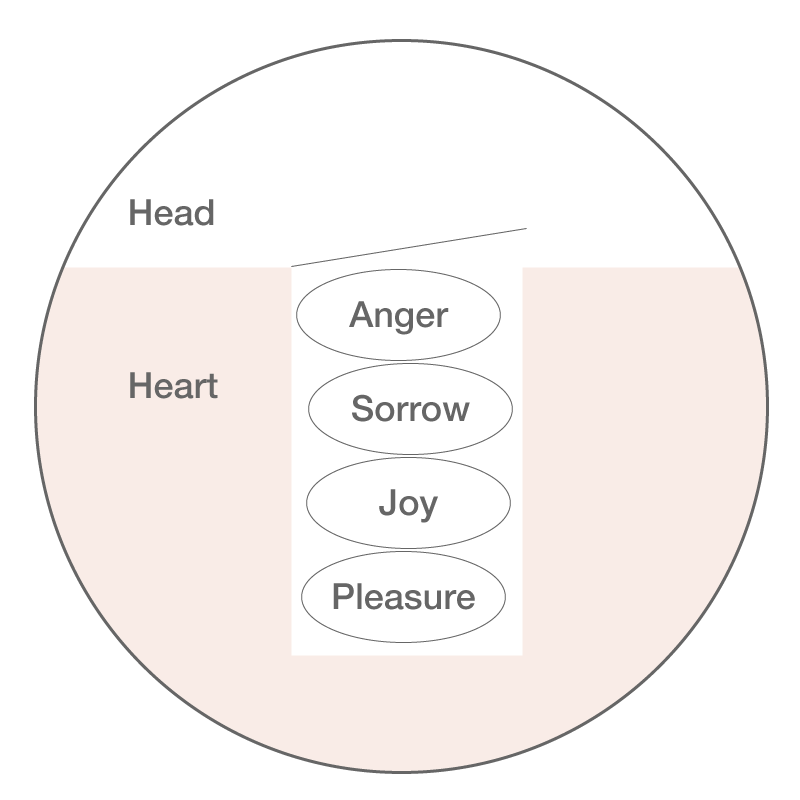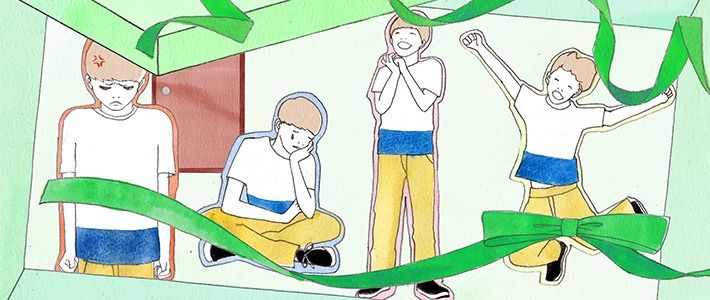
A Japanese Psychiatrist’s Takes on the Trials of Life
Unblocking the Heart’s Well of Emotions
Society- English
- 日本語
- 简体字
- 繁體字
- Français
- Español
- العربية
- Русский
People Who Cannot Hear Their Own Hearts
The clients I see in my practice often tell me, “I can’t feel anything deeply, no matter what I do, see, or hear,” or, “I can’t get a real sense that I’m doing things myself.” This feeling of being detached from everything makes life dreary. To recover deep emotions and a sense of active involvement, I advise them to start by listening to their hearts.
Many respond to this advice with bewilderment. “I’ve no idea how to do that,” they say, or, “I can’t tell which voice is the voice of my heart.” As I wrote in my previous column, people who have locked the door between their head and their heart have not heard their heart’s voice for a long time, and they find themselves at a loss when they try to.
Why was that door locked in the first place?
The heart is the locus of emotions and sensations. At some point in the past, these people may have shut the door to their hearts so as to avoid problems arising from direct expression of their feelings. This is a standard pattern.
If so, what were the problems?
Two Kinds of Emotion
What we call “emotions” do not necessarily come from the heart. In fact, almost everything that we describe as “emotional” arises in the head.
The head (brain) is like a computer, and it seeks to control. It is where we calculate our profits and losses, make comparisons, and run simulations. So the emotions that are based on these functions all originate in the head.
Typical examples are the regret we feel when we review our past losses and the anxiety we feel on the basis of our forecasts about the future. Happiness when things go as hoped and annoyance when they do not, which are emotions resulting from our desires, reflect the head’s determination to be in charge. And emotions like jealousy, contempt, and feelings of inferiority or superiority arise from the comparisons that our head makes between ourselves and others.
To make a distinction between the emotions that come from the head and those that come from the heart, which are of an entirely different nature, I will refer to the former as “shallow” and to the latter as “deep.”
Put simply, the emotions from the heart—our deep emotions—are of four types: anger, sorrow, joy, and pleasure. They are all varieties of love, which resides in the heart.
When one encounters evil in the form of people’s desire to control or force their ego on others and sees this evil directed at oneself, one’s heart responds with righteous anger, shooting it off like an interceptor missile. When we are faced with misery or a pitiful situation, the heart feels sorrow. And when we encounter an outpouring of life that makes our heart throb in resonance, it is filled with joy and pleasure. These are our deep emotions.
A Blocked-Up Well
If the door to the heart is closed, these deep emotions remain stuck in the heart, unable to emerge.
As shown in the diagram, there is a “well of emotions” below the door, and the emotions in it are stacked in a particular order from top to down: anger, sorrow, joy, and pleasure. This order is a key observation that has become apparent from my years of clinical practice.
It is important to note that the emotions commonly regarded as negative—anger and sorrow—are at the top of the stack, while those seen as positive—joy and pleasure—are down below.
If anger and sorrow are blocking the way, then joy and pleasure cannot come out. So the kind of advice given in self-help books that one should prize positive emotions and not fall under the sway of negative ones is impossible to put into effect. This mistaken advice is widely seen these days. I think it comes from a failure to properly distinguish between the shallow anger that comes from the head and the deep anger of the heart.
The deep anger and sorrow of the heart are both ultimately expressions of love. Simplistically labeling them negative is a great error.
Forms of Love
Buddhist and Hindu sculptures plainly indicate how the deep emotions express love in different ways, as shown in this set of photographs.
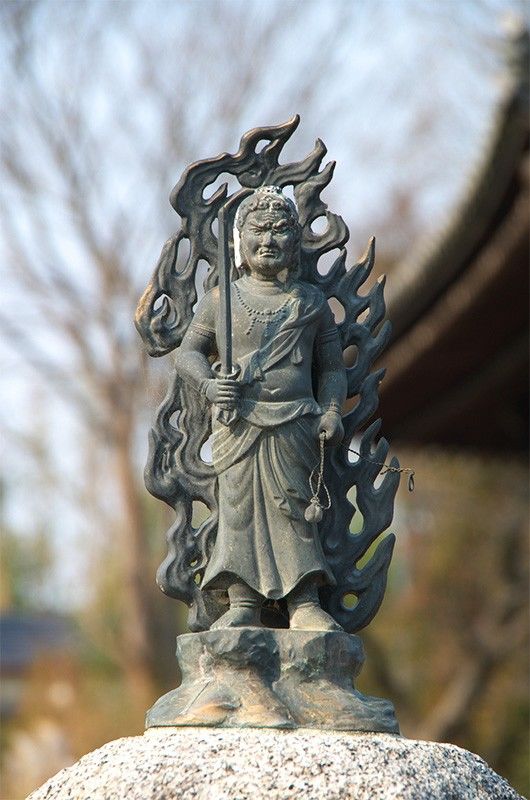 Righteous anger against manipulative desires and egotism can be seen in this statue Fudō Myōō.
Righteous anger against manipulative desires and egotism can be seen in this statue Fudō Myōō.
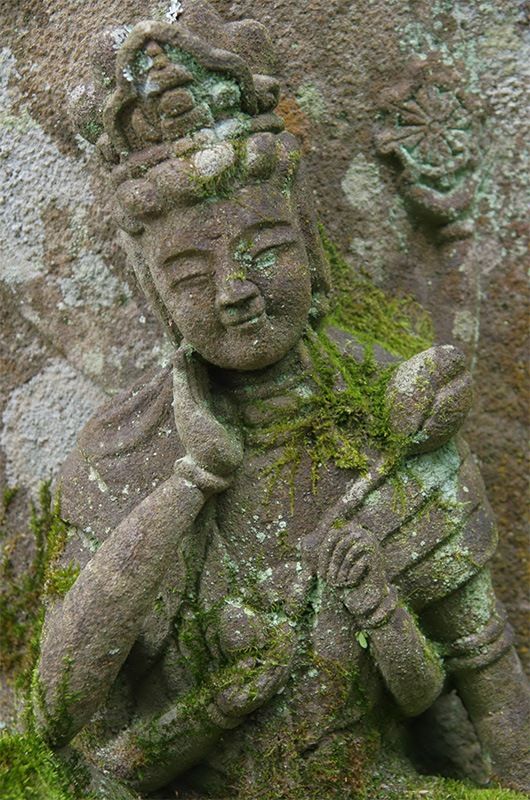 Sorrow on the face of this bodhisattva expresses charity toward those who are frail and unfortunate.
Sorrow on the face of this bodhisattva expresses charity toward those who are frail and unfortunate.
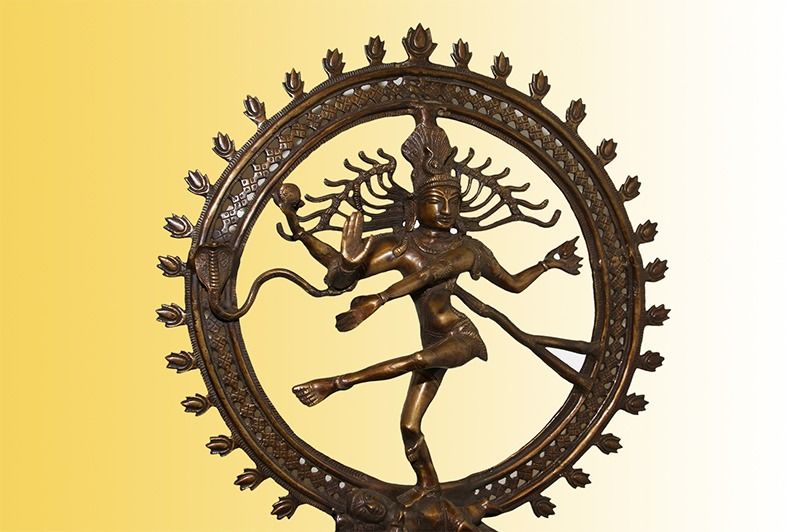 This statue of the Hindu god Shiva dancing to music represents joy and pleasure..
This statue of the Hindu god Shiva dancing to music represents joy and pleasure..
Images like these confirm that we must equally treasure the deep emotions of anger, sorrow, joy, and pleasure.
A failure to distinguish between shallow and deep emotions leads to the misunderstanding that anger and sorrow are negative and should be suppressed. This is usually the cause for closing the door between the head and heart.
The Importance of Anger
In my practice as a psychiatrist, I have found that many clients who have closed the door to their heart were raised in environments where their parents frequently spewed shallow anger. They saw anger as loathsome and became strongly resistant to displaying their own—not just their shallow anger but their deep anger too. This is probably how they came to lock the door to their heart, placing a firm lid on their well of deep emotions.
As we saw in the diagram above, preventing anger from getting out means also stoppering up the other emotions below it—all the deep emotions that are so valuable to human existence.
If these emotions are trapped, then people do not feel anything, whatever they do, see, or hear. They cannot experience the joy of living. Their existence is depersonalized, and they say, “Everything seems to be happening behind a thin veil,” or, “The outside world appears to be nothing more than a slide show.”
Such people must work at opening the door to their heart. And as they do, it is crucial that they overcome their mistaken thinking about anger, the emotion at the top of the stack. They need to recognize that what hurt them was their parents’ shallow anger, and that deep anger is a wonderful form of love.
Opening the lid and letting out the anger from the well of deep emotions does not mean that people should indiscriminately dump this anger on those around them. What is important is for the head to grasp the anger and other deep emotions arising from the heart without distortion and then—as the regulator of our social interactions—to pass appropriate judgment on whether to express these emotions in words and actions.
To be sure, keeping our deep emotions bottled up inside may lead to frustration. When the head has decided against expressing them to others, instead of just keeping them inside, I recommend writing them down in what I call “notes of the heart’s venting.” These notes are not for anybody else to see. But just getting the emotions out of the head in the form of written words can provide considerable relief.
Over the long course of human history, deep anger has served as the source of energy for the fight against evil in various forms, including discrimination, abuse, and irrational customs and social systems, and these anger-driven struggles have produced many wonderful results. Yet, at some point, the superficial notion that “it is best not to get angry” has taken hold.
Suppressing deep anger leaves people mentally neutered, far removed from the joy of living. And losing the power to reject the irrational allows evil to run riot through the world.
It is essential for everyone to reconsider the importance of deep anger.
(Originally published in Japanese on April 25, 2018. Banner illustration by Mica Okada. Diagram by Izumiya Kanji.)▼Further reading
 Reactivating the Self by Listening to the Heart Reactivating the Self by Listening to the Heart |  Overcoming the Fear of Solitude Overcoming the Fear of Solitude |
